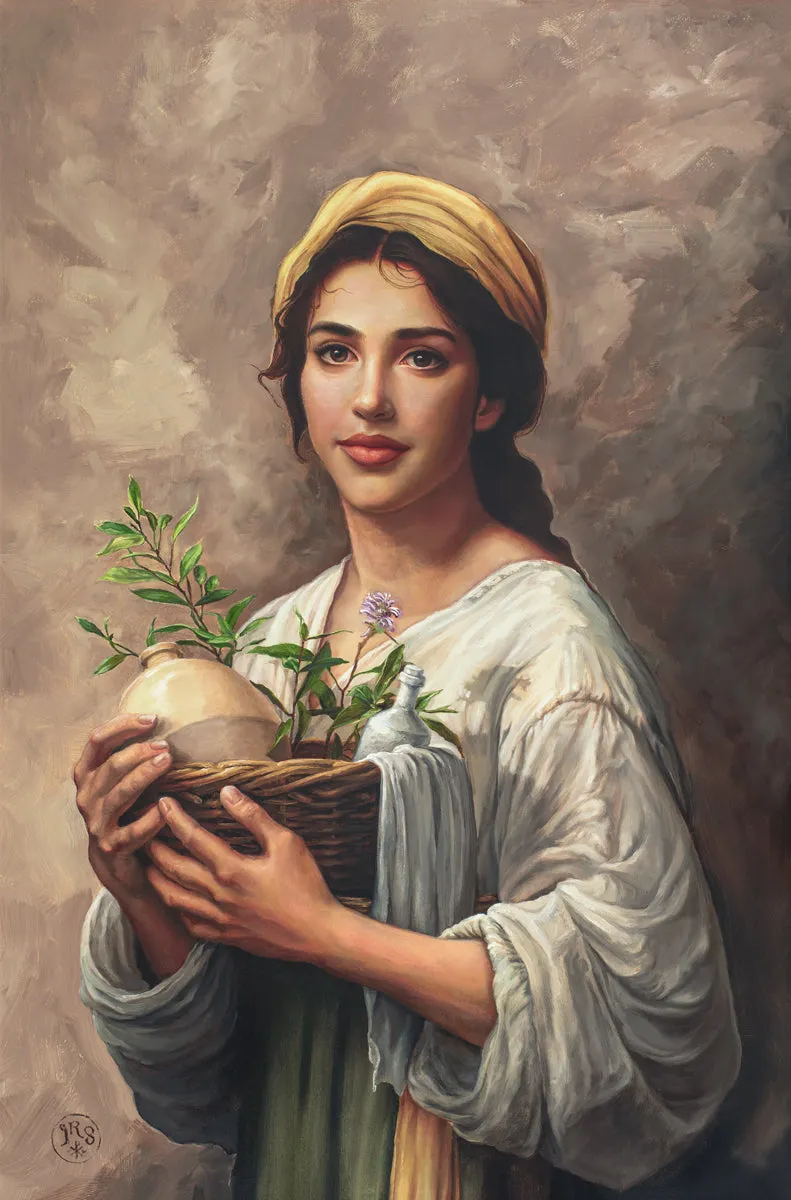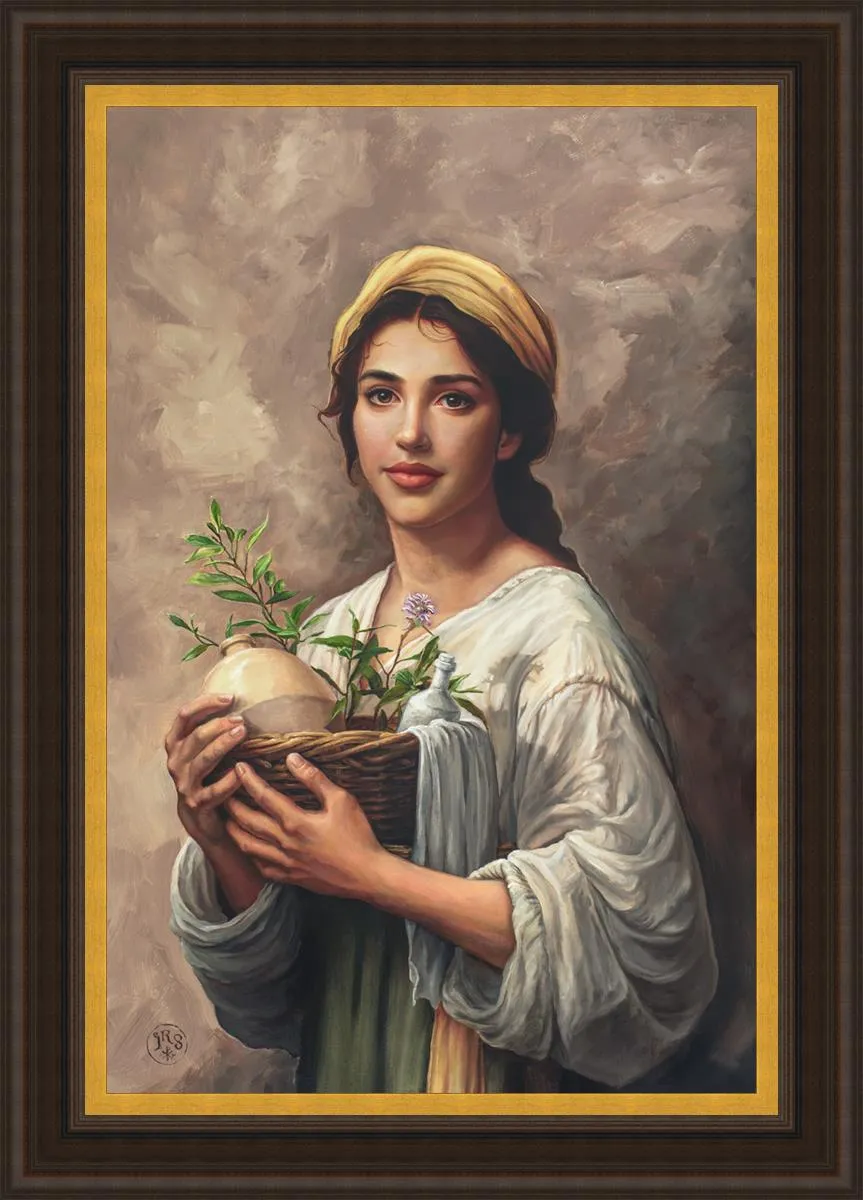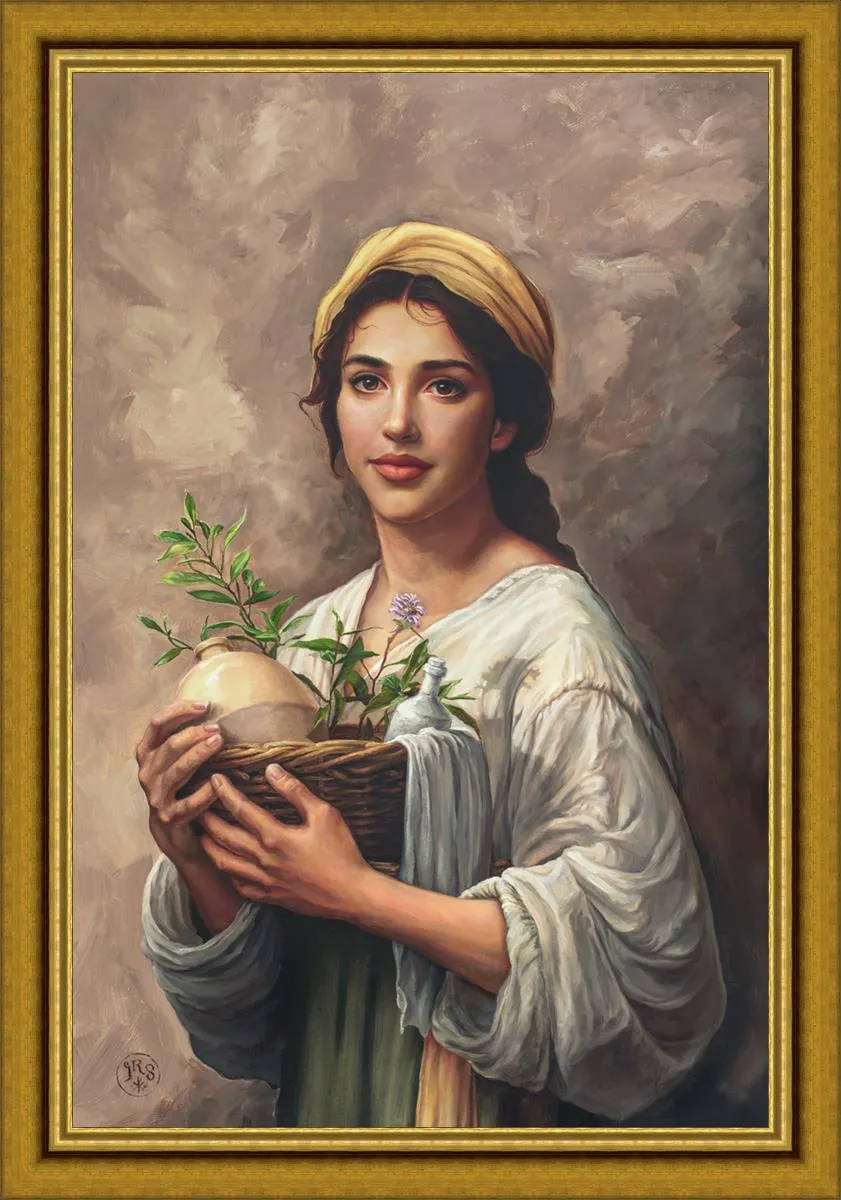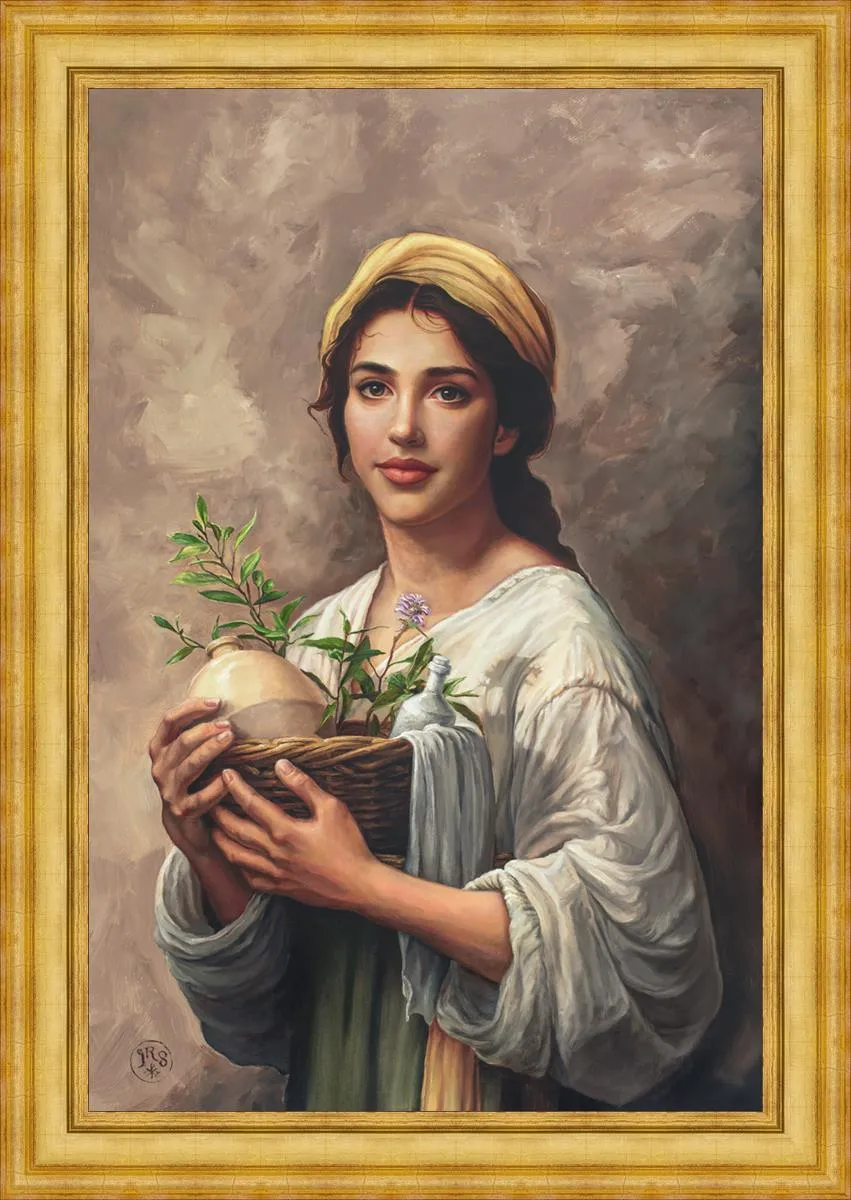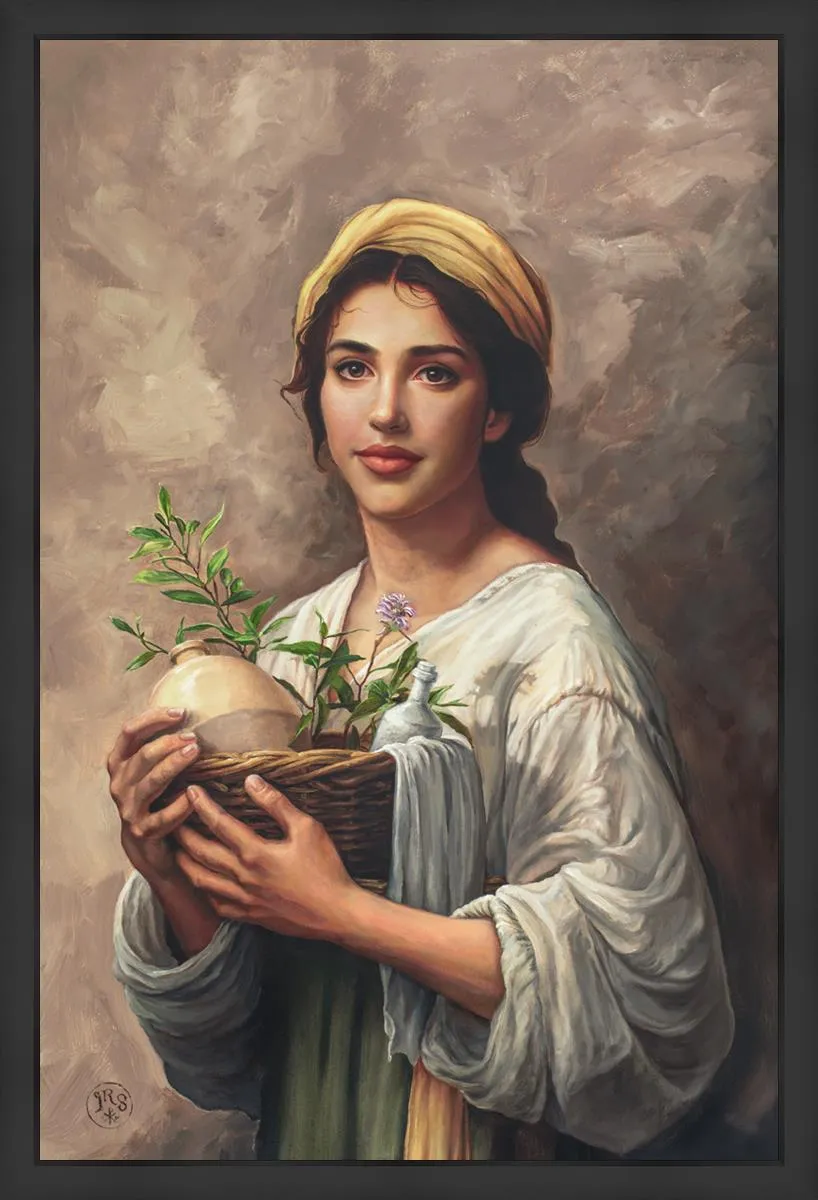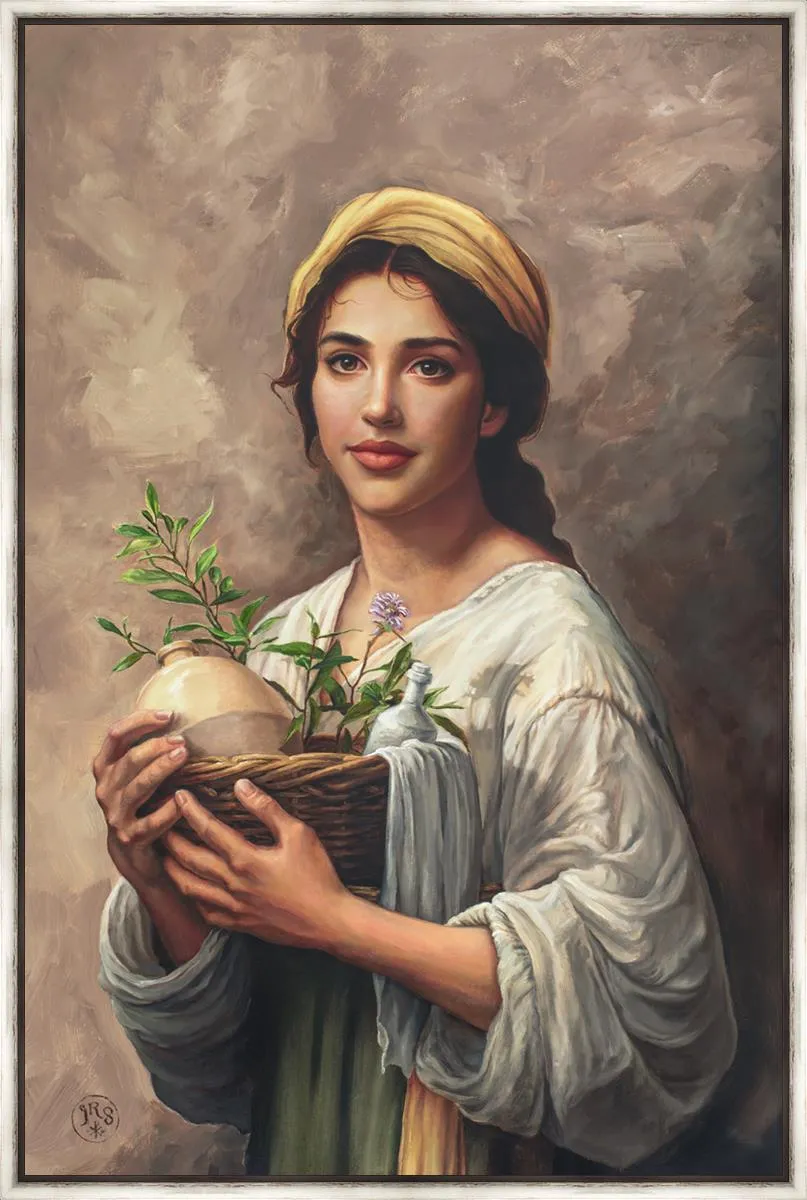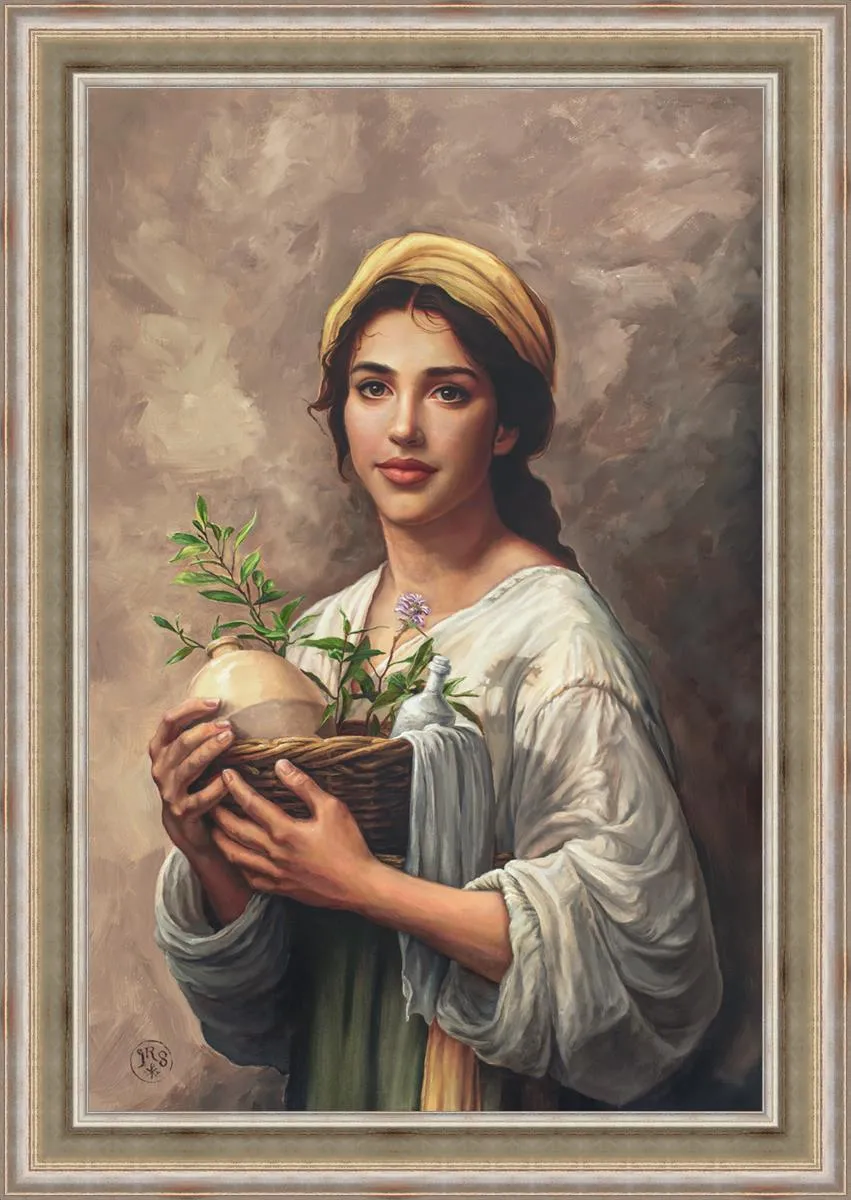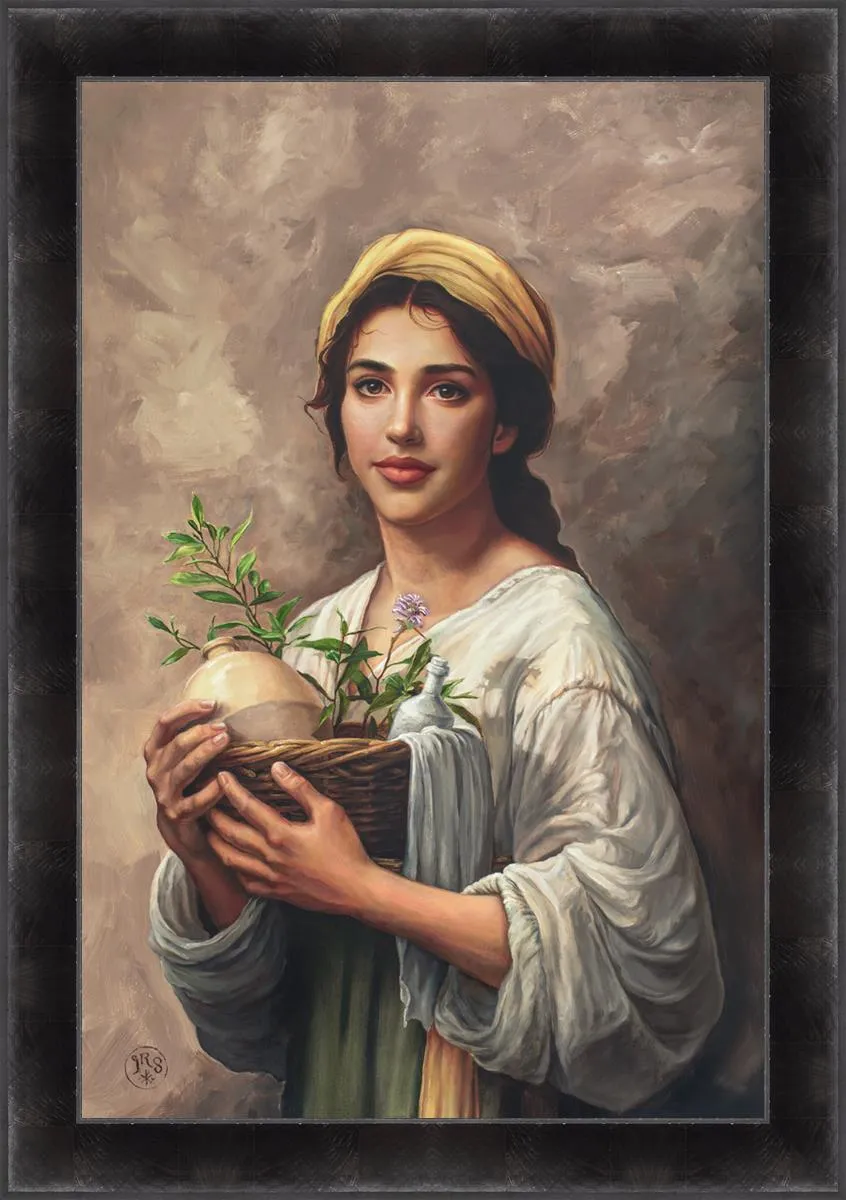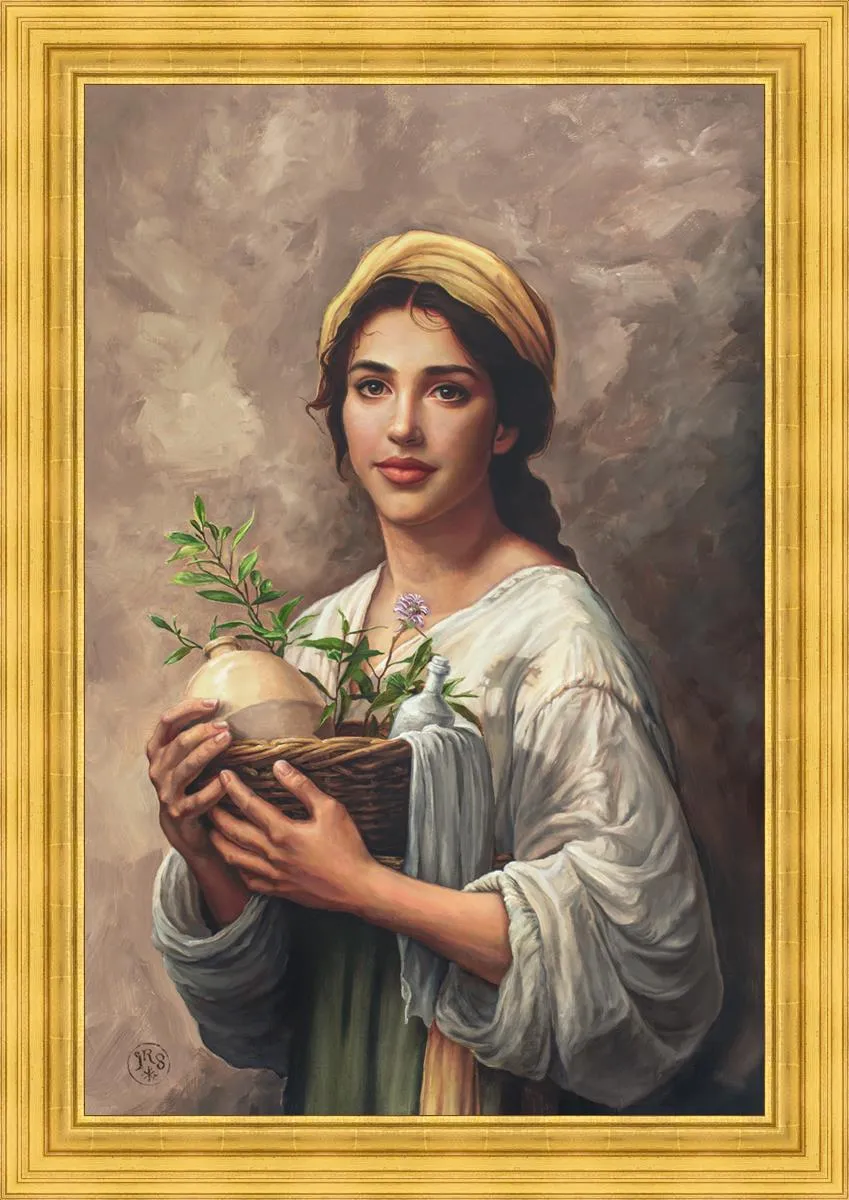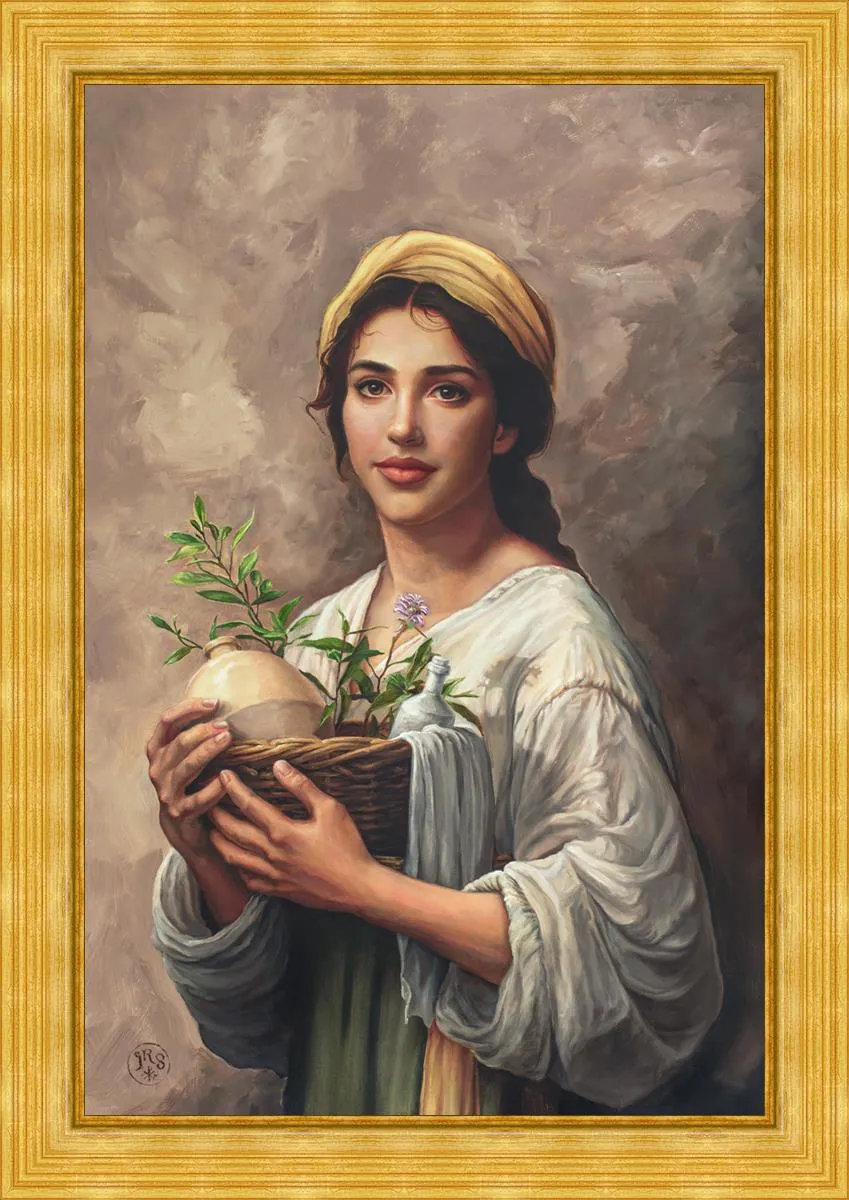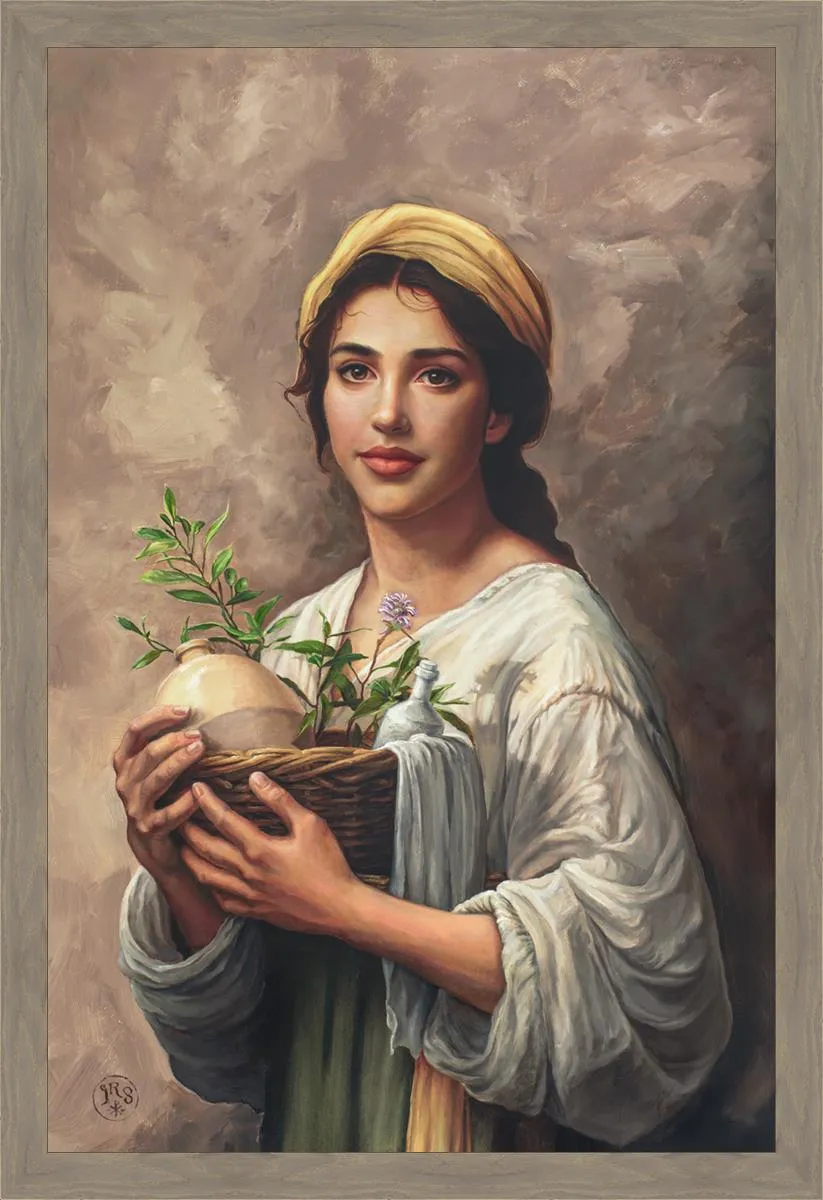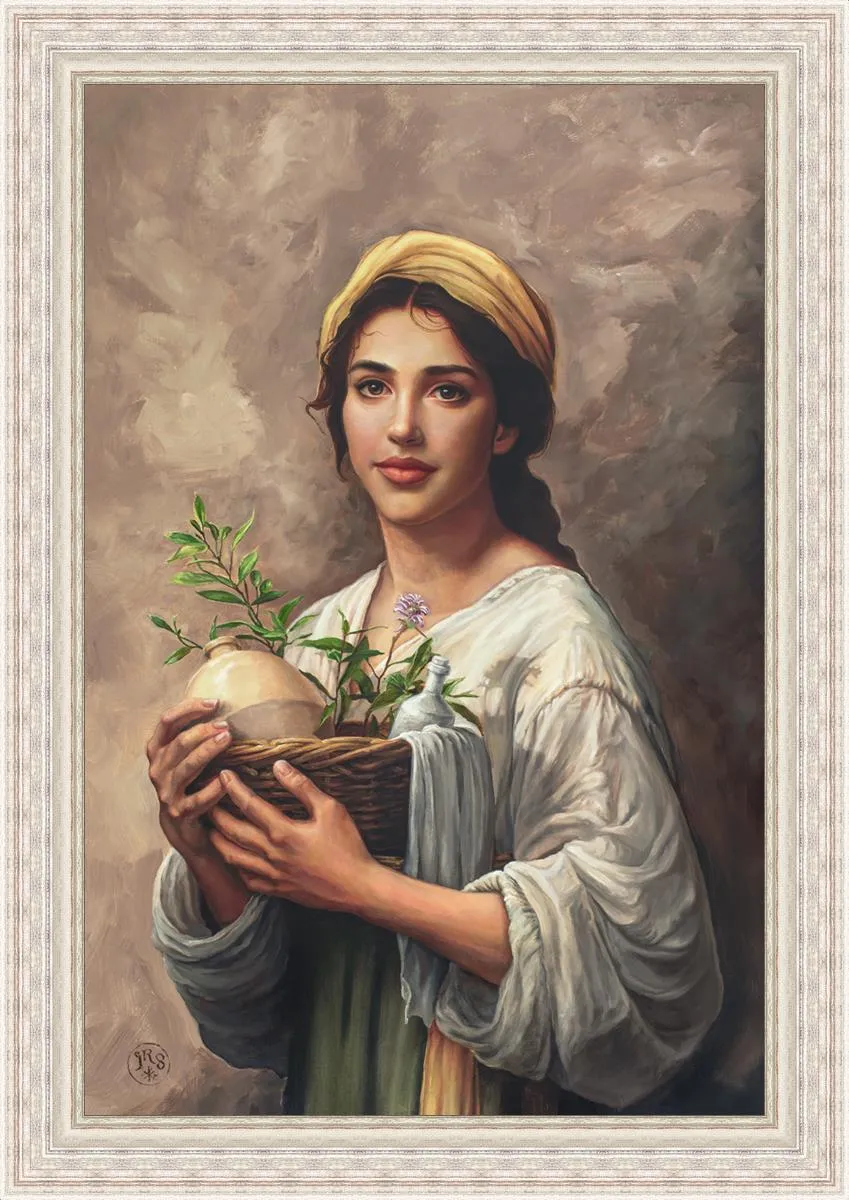This portrait of St. Mary of Bethany is part of a series that delves into the unique relationship between the siblings of Bethany—Martha, Lazarus, and Mary—and Jesus Christ. My journey to paint Mary of Bethany began as part of my own faith formation. I sought to distinguish and put faces to the various individuals mentioned in the new testament, particularly the women named Mary, as they can tend to be confused with one another. This exploration led me to uncover the profound and intimate connection these siblings had with Jesus.
"She Who Anointed The Lord" is the second painting in a series of three portraits, following St. Martha. Through my research, I discovered that Mary of Bethany and Mary Magdalene have often been conflated throughout history. Many have attributed the actions of Mary of Bethany, specifically the anointing of Christ with oil before His passion, to Mary Magdalene. This anointing holds significant importance in the narrative of Christ's life and mission.
This neoclassic portrait captures St. Mary of Bethany holding a basket that contains vials of oils traditionally used for anointing in the Jewish custom. As referenced in the New Testament, the spikenard oil within the alabaster jar is a significant element, symbolizing the anointing of Jesus before His passion. Accompanying the jar is a spikenard plant, emphasizing the purity and preciousness of the oil. Olive oil and an olive branch are also present in the basket, symbolizing peace and divine blessing.
The composition of the painting is intended to evoke a sense of peace and tranquility, encouraging reflection on the resurrection and its promises. The serene expression on Mary’s face, combined with the gentle light that bathes her figure, invites viewers to contemplate the hope and assurance offered by Christ’s resurrection.
At the same time, the inclusion of these anointing oils serves as a poignant reminder of our own mortality. Just as Mary anointed Jesus in preparation for His burial, we too will face our own final anointing. This dual symbolism—of resurrection hope and the reality of mortality—urges us to make the most of the time we have, to live with purpose, and to consecrate our lives to Christ.
The terms "Christ" and "Messiah" both mean "the Anointed One," and the early Church Fathers frequently connected this anointing with Jesus' identity and purpose. The anointing before His passion served as a public acknowledgment of His role as the Messiah and the fulfillment of Old Testament prophecies. It underscored Jesus' divine mission and the prophecy that He would be anointed, symbolizing His consecration as the Savior of humanity.
The friendship Jesus shared with Lazarus, Martha, and Mary is one of the most profound relationships depicted in the Gospels. It exemplifies a central teaching of Christianity that sets it apart from other philosophies and religious traditions: Jesus did not come merely to teach ethical behavior or moral living. His ministry and the essence of Christianity proclaim the promise of resurrection and eternal life. As the apostle Paul wrote, "For as in Adam all die, so in Christ all will be made alive." This core belief—that through Christ, all shall live again—offers unparalleled hope and comfort.
Modern philosophers might dismiss the resurrection as a comforting fiction meant to assuage our fears of death. However, Christ's teachings challenge this criticism. He calls us to bear our own crosses and endure the sufferings of this life, some even unto persecution and martyrdom. The resurrection teaches us that no matter the sacrifices we make, God can magnify them and reward us manifold in the life to come.
This unique dogma of the Christian faith lies at the heart of the Christian admiration for the Bethany siblings. It is the intention of this painting, and the story it tells, to bring viewers to the same sense of hope and assurance in the resurrection guaranteed by Jesus Christ.
Through this portrayal, I aimed to highlight the dignity and sanctity of Mary's act of devotion. Her gesture of anointing is not only a testament to her faith but also an invitation to each of us to embrace our spiritual journey with similar reverence and dedication.
Reproduced from the artist's original artwork of Oil on Canvas 24 x 36. Painted 2024.

 Cart(
Cart(